Are you struggling to amplify the growth of your SaaS business? 👩💼 Do you wish to onboard more customers while retaining the existing ones? 🚀
Welcome to a comprehensive guide on acquisition tactics based on the proven Pirate Framework (AARRR)! In this article, we will navigate together through 46 effective measures that can escalate the growth of your SaaS business.
Embrace the opportunity of growth hacking 💡 and understand how you can Attract users, Activate them, ensure they Retain, squeeze out Revenue, and accomplish Referrals. Our research is infused with insights and recommendations that can help you script a successful growth story. 📈
Stay hooked as we dive deep into each of these tactics, elaborating on their best practices, benefits and real-life case studies.
#1 Add a PDF Download Page to your content
Drive lead generation by offering a downloadable PDF on a topic of interest to your target audience.
- Create a dedicated landing page where visitors can access the PDF after providing their email address.
- The PDF should offer valuable insights, establishing your company’s authority on the subject.
- By capturing email addresses, you can nurture these leads with further content and product offers.
- This tactic not only fills the top of your funnel with qualified leads but also positions your brand as a thought leader in the industry.
- Ensure the content of the PDF is relevant to your product or service, guiding the reader towards considering your solution.
#2 Add embedding features to your product to create viral loops
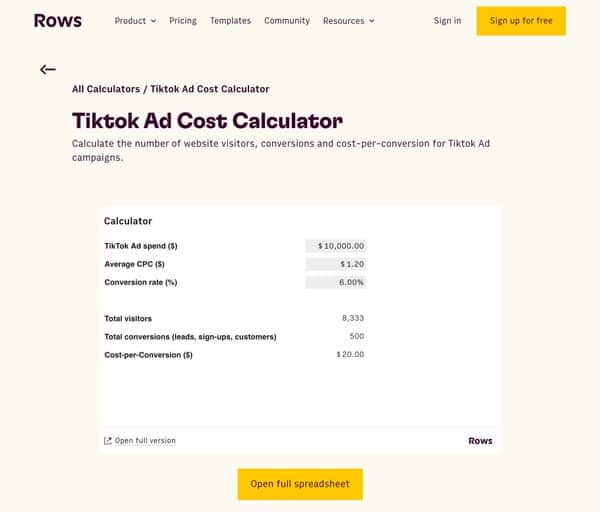
Embedding features within a product can create a self-sustaining growth loop. When users interact with the embedded feature, they often share it, leading to increased visibility and potential new users.
Rows.com Approach: The use of calculators is adjacent to spreadsheets, making it a relevant strategy for Rows. By creating public calculator landing pages, Rows uses embeds to solve functional problems (the calculator itself) and increase feature awareness. Project Components: Each calculator landing page consists of an embedded spreadsheet calculator, a guide on its usage, and a CTA inviting visitors to explore Rows further.
🏆 Results: Within 10 weeks of publishing the first batch of calculators, the pages generated 43k impressions and 500 clicks.
Loom’s Strategy*: Loom allows users to record and share video messages. When a non-Loom user views the video, they receive an invitation to try Loom, creating a viral loop.
Credits: Henrique Cruz Learn more from row’s strategy in this post.
#3 Add Product Integrations
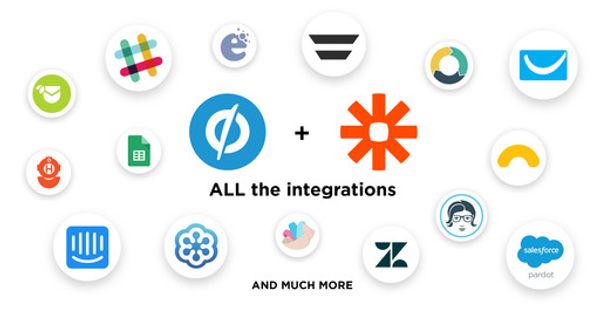
Integrate your app with popular products to complement their functionality and tap into their user base.
✅ This strategy benefits both parties: you gain access to their audience, and they get added value, making their users more likely to stay. ✅ Many companies, such as Asana, Basecamp, Slack, Stripe, Xero, and MailChimp, have separate integration pages listing various add-ons. ✅Being listed there can boost your visibility.
📊 Properly executed integrations can bring in 500 to 1,000 new visitors per month.
📊The conversion rate from these visitors can be as high as 10-15%.
Steps to implement:
1. Research popular products for potential integration and see what integrations your competitors have.
2. Check if these products have dedicated pages to feature integrations.
3. Contact them to understand the integration process.
4. Prepare a landing page highlighting the integration, beneficial for SEO and backlinking.
5. Create content and visuals for the partner’s integration page.
6. Announce the new integration through a blog post or other communication channels.
#4 Add/Invest in product-led growth
1. Can you offer a self-service onboarding?
2. Decrease the time-to-value (aha-moment)
3. Measure product usage and offer product-enabled sales activities
4. Optimize conversion from active users to paying customers (e.g. opt-in, checkout, pricing, etc.)
5. Retention Strategy
5.1. How do you decrease churn (Customer Success, Training, Customer touchpoints, etc)
5.2. How do increase revenue over time (upsell/cross-selling strategy, Pricing)
6. What viral features can you add to your product to create a growth flywheel?
👉 Learn more about the SaaS Growth Flywheel (AARRR Funnel)
#5 Address Crawl Errors via Google Search Console
Google Search Console provides insights into how your website is performing in search and highlights any crawl errors.
Promptly addressing these errors ensures a smooth user experience and can improve your site’s SEO performance.
#6 Always follow up
You need to own the follow-up. Don’t leave a sales call with ‘We will come back to you.’
You need to know what’s happening next.
Ideally, you can already align on a clear next step (e.g. follow-up call on Friday 11:00).}
#7 Apply Sales Discovery questions
Focus on your Sales discovery to find the true pain points of your customers and in order to show them the real value of your product. Knowing the real pain points help you draft better follow-up communication. Great discovery questions help you qualify, keep your pipeline clean and focus on the most promising leads.
Every great sales discovery should give you at least the following answers:
– Does the prospect have a problem/pain? If yes, what is it?
– Are they aware of the problem?
– Do they want to solve the problem?
– What implications does it have for them, if they can’t solve the problem?
👉 Here are 10 great B2B SaaS Sales Discovery Questions.
#8 Ask for the close
If you’ve done a great sales demo (discovery questions, pain points confirmed by the customer) then show the value of your product. If the prospect is a great fit for your product) it’s time to go for the sale.
Even if they can’t decide, you can always ask ‚’why‘ and learn what’s missing for them to take the decision.
Now tailor your follow-up based on that. Always follow up.
#9 Be a podcasts guest before starting your own podcast
Gain experience, credibility, and a potential audience by guesting on established podcasts before launching your own. Being a guest allows you to understand the dynamics of podcasting without the pressure of hosting.
• Audience Building: Appearing on established podcasts gives you access to their listeners.
• Credibility & Networking: Being a podcast guest can position you as an authority in your field. It also allows you to network with podcast hosts and other influential figures in the industry.
• Feedback & Refinement: Use the feedback from your guest appearances to refine your messaging, presentation style, and content ideas for your own podcast.
Start by identifying podcasts that align with your expertise and target audience. Craft a compelling pitch highlighting the unique insights you can offer and reach out to the hosts.
🔗 How to get Interviewed on podcasts
#10 Build an objection battle cards
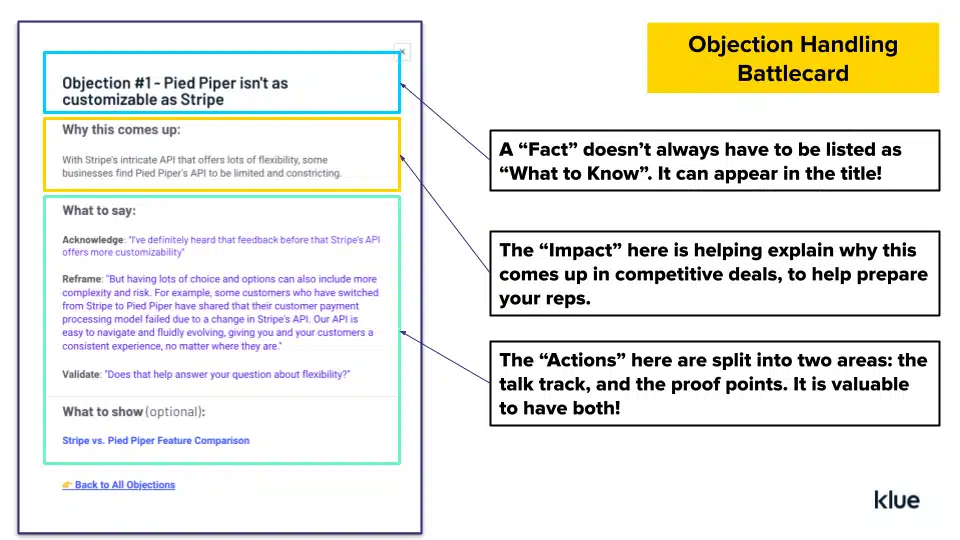
Create a list of the top 5 objections and learn how to handle them.
The most common objections include:
- Your product is too expensive
- We can’t decide right now
- We miss XYZ feature
You can also include competitors in your battle cards.
Revise your communication and see if you can already anticipate them in your communication (e.g. Welcome Email sequence, FAQ…).
#11 Build Comparison Pages
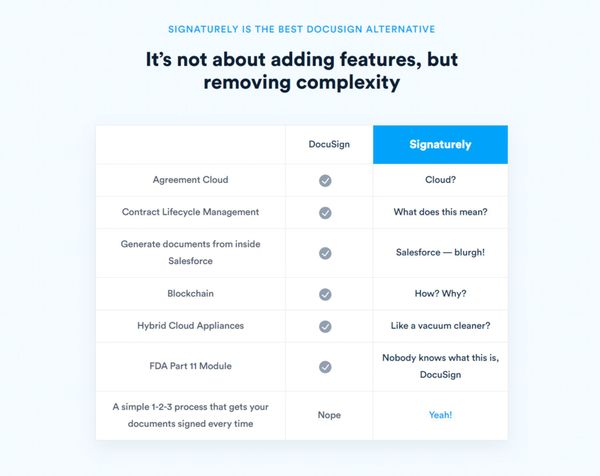
Steal ready-to-buy leads from your competitors. Show users you’re their best option with comparison pages built to rank, persuade, and convert. Many users search for comparisons like “Competitor 1 vs Competitor 2” before making a purchase decision.
Create a page that compares your product with major competitors to highlight your unique advantages.
✅ Such comparisons can drive significant organic traffic. For instance, Everhour’s comparison of their product versus Harvest and Toggl ranks high in search results.
✅ Once set up, these pages can drive consistent traffic with minimal ongoing effort.
✅ It allows you to proactively communicate your core benefits over competitors.
Credits & Image: Fede Jorge Check his service: Seo Comparison pages for SaaS.
#12 Build free tools to acquire users
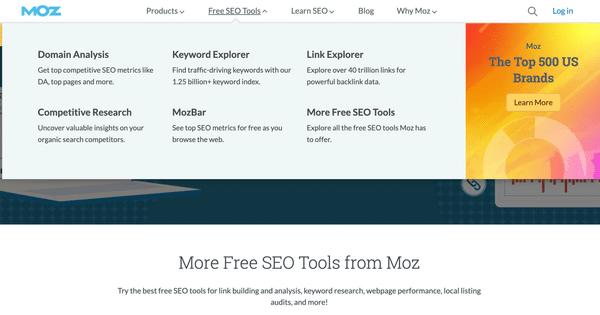
Building separate free tools, not just free trials, can serve as powerful growth channels for SaaS businesses by breaking down customer resistance barriers. Three most important takeaways:
1️⃣ Free tools are separate from the core product and require no signup.
2️⃣ These tools address two primary customer resistance points: lack of trust and the desire to see quick results.
3️⃣ The strategy involves offering a limited feature set in the free tool and including a strong call to action to guide users to the main paid product.
Many SaaS companies have successfully implemented this strategy. Examples:
1) Hubspot Free Email Signature Template Generator by HubSpot Make My Persona – Free Buyer Persona Template Generator \(2023\) Website Grader – Check your Pages for Speed and SEO and many more…
2)Moz Moz Free SEO Checkers & Premium Search Tools
💡 The Buffer case: They initially offered a simple tool to schedule tweets. This free tool gained significant traction and became a comprehensive social media management platform.
#13 Consistent Messaging from Ad to Landing Page
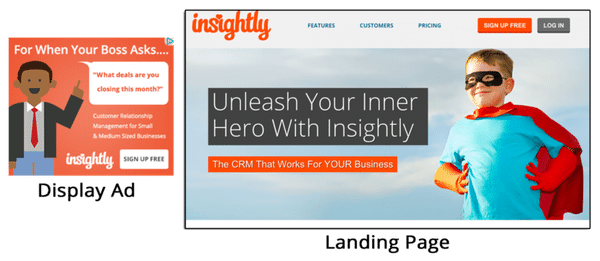
Ensure that the messaging on your landing page aligns with the ad copy that brought visitors there. This creates a seamless experience and sets clear expectations.
👉 Reduce Bounce Rates: Matching the messaging can decrease bounce rates as visitors are more likely to stay on a page that aligns with their initial expectations from the ad.
👉 Boost Conversion Rates: Consistent messaging can lead to higher conversion rates as it reinforces the message and call-to-action that initially attracted the visitor.
👉 Build Trust: When your ad copy and landing page messaging are in sync, it builds trust with the visitor, as they feel they are in the right place and that the brand is reliable.
#14 Convert your Lead Magnets into PDF format
Offer valuable content in the form of a downloadable PDF to capture leads.
👉 This tactic involves creating a dedicated page where visitors can access and download content relevant to their interests.
👉 In exchange for the PDF, collect email addresses to nurture these leads further.
Make sure the content is of high quality and resonates with your target audience’s pain points or interests.
#15 Create a 30-day content calendar from a single blog post
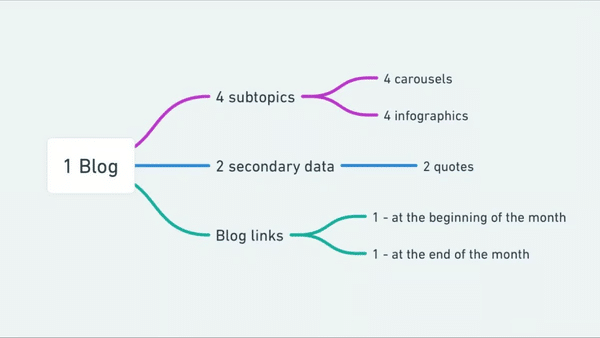
Step 1: Pick a blog from website that covers a broad topic. You can share link to the blog in your socials. That makes 1 content.
Step 2: Break down the broad topic into several subtopic. For the sake of the post, let’s assume I have a minimum of 4 subtopics in hand. Step 3: Develop 4 carousels that will dive deep into the subtopics. That makes 1+4 content.
Step 4: Pick up the quantitative figures from the blog and make infographics out of them. If there are no numbers mentioned in the blog, make visual interpretation of the qualitative stuff that’s already in there. For the sake of this post, I am assuming that I can create 4 such infographic from the 4 subtopics. Now we have 1+4+4 content.
Step 5: Pick up quotes or important facts from the blog and turn them into static images. Elaborate the fact in your caption. Let’s say you can create two such statics from the blog. I usually use data I derived from secondary sources to make these kind of content. We have reached 1+4+4+2 content.
Step 6: Reshare the blog link in your socials to generate more traffic. No harm in doing that. We now have generated a total of 1+4+4+2+1 = 12 content to cover us the whole month.
Credits: Rifah Nawar
#16 Create a Sales Forecast / Activities needed (reverse engineering)
Align your team with specific growth activities they need to deliver every week. Discuss those activities in your weekly (or monthly) meetings.
Growth goals can be for example:
- 3000 website traffic per week
- 30 new sign-ups every week
- 20% conversion to active user/ sales-demos
- 1 new paying customer every week
Reverse engineer what you need to do (input: Growth activities) to achieve the goals, for example:
- 2 blog posts every week
- 100 cold emails every week
- 1 webinar every month
#17 Create Longform Content from Existing Posts
By merging several smaller posts on related topics, you can create a comprehensive longform guide or “mega-guide.”
- Longform content tends to rank better on search engines and can establish your brand as an authority on the subject.
- This approach not only breathes new life into older content but also provides readers with a one-stop resource on the topic.
- Additionally, combining insights from multiple posts ensures depth and thoroughness, enhancing the user experience.
#18 Display testimonials based on location
Displaying testimonials that match the geography of the site visitor can significantly enhance trust. Visitors are more likely to recognize and resonate with brands or individuals from their own region. 👉 Implement systems that automatically detect the visitor’s location and adjust the displayed testimonials accordingly. This ensures a personalized experience for every visitor.
#19 Get Interviewed On Podcasts
Getting interviewed is easier than starting your own podcast. Being interviewed on relevant podcasts allows SaaS companies to directly communicate with potential users, sharing insights, stories, and the value proposition of their product.
👉 Research and identify podcasts that align with your industry or target audience. Craft a compelling pitch highlighting your expertise and the value you can bring to their listeners.
🔗 Grab Free: Top 100 B2B Podcasts list
🔖 How to Craft a Winning Podcast Pitch +Free Template
#20 Implement viral loops to drive potential users to your app
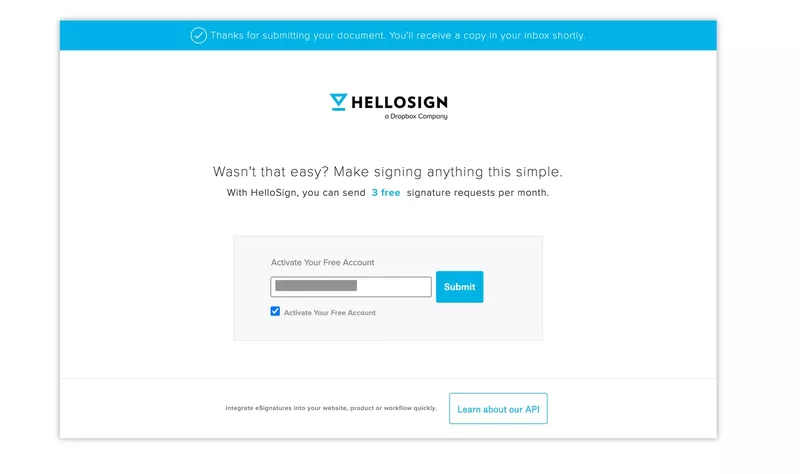
A growth loop is a self-reinforcing cycle where every user action leads to an output, which in turn generates more inputs for the next cycle, driving continuous growth.
• Three Main Components:
◦ Input: The initial trigger or action, such as a user signing up.
◦ Action: The main activity or behavior you want the user to take, like referring others.
◦ Output: The result of the action, which becomes the input for the next cycle, e.g., new user sign-ups from referrals.
✅ Acquisition growth loops, especially those based on referral programs, can be a cost-effective strategy for attracting potential users.
#21 Improve your Cold calling skills
- See the structure of great cold emails. (important to have a trigger event/strong Why you call them)
- Have a strong opening sentence (trigger based)
- Ask open-ended questions to get a conversation going
- Can you make use of social proof?
- Listen more than you talk
- Have a clear ‘goal 1’ and ‘goal 2’ in mind
- Test different times + create a calling hour habit
- Create an objection handle sheet to handle the most common cold call objections
- Record your calls and optimize your tone of voice (a positive mood is needed for great calls)
- Always ask for referrals/intros
#22 Know the ‘results’ of your product
Talking about the results delivered by your product is excellent. Do not only talk about functional results, but also emotional and social results associated with using your product. Here are three examples:
1. Functional results:
• Close more deals (e.g higher win rate)
• Keep customers engaged (e.g. lower churn rate)
• Build a positive employer brand (e.g. faster time to hire)
• Release more features faster (e.g. increase in NPS score)
• Create nice social media assets in minutes (e.g. higher social engagement)
2. Emotional results: How your customers feel
• Feeling proud
• Feeling confident and strong
• Feeling organized
• Feeling relaxed
• Feeling smart
3. Social results: How your customers are perceived (by others)
• Increase in standing and reputation
• Being seen
• Belonging to someone
• Being Relevant
• Being perceived as professional
#23 Leverage partnerships and integrations as a form of social proof to boost product credibility.
Showcasing collaborations with major industry players can enhance trust and highlight the value of your product. Actionable Steps:
1. Highlight major integrations on your landing page.
2. Consider a dedicated integrations page for detailed info.
3. Share success stories or testimonials related to integrations.
4. Regularly update your list of integrations.
5. Engage in joint marketing efforts with partners.
#24 Offer custom enterprise plans
Add an enterprise plan to your pricing page (even if you have no enterprise product yet).
CTA should be to schedule a sales call.
You will learn a lot during those calls and can offer custom deals to enterprise prospects.
#25 Prioritize work emails during the signup
By explicitly asking for a work email during the signup. you’re more likely to get serious leads about your product or service, filtering out less engaged users.
👉 Work emails are valuable for segmentation and personalized outreach.
💡 Decrease Bounce Rates: Work emails are more reliable and less likely to bounce than personal emails.
#26 Reality check for your marketing attribution
Marketing attribution has always been a controversial topic as it’s hard to measure correctly with so many touchpoints.
One old way to keep it simple? 🤔 Ask your customer during onboarding, simply ask your customers, “How did you find out about us?” Don’t use a multiple-choice format for this question. Instead, give them a text box where they can write their answer freely.
#27 Revamp the top 3 jobs to be done
Customers don’t buy your product because of all your features. Actually, they don’t care. Customers “hire” your product.
They care about what’s in for them. Your product helps them to do their job better: -e.g. create beautiful websites/convert lots of traffic in signups/close more deals/get customers’ insights (—> Jobs to be done) They want to feel [emotional results using your product] – e.g. healthier/more productive/smarter
👉 Revamp the 3 main jobs to be done for your ideal customer (do research, customer interviews, read reviews, etc.). Adapt them in your customer-facing communication.
#28 Revamp the ‘above-the-fold’ section of your Website
Use the above-the-fold section of your website (section visible before scrolling down) to answer two main questions:
• How does your product help your visitor? (Main Benefit, Main Job to be done)
• What is it that you are selling?
Have a strong CTA button (Free Trial or Talk to sales) and include the main benefit of your product. Add notes like ‘no credit card required’ or ‘get started in 5 minutes’ to counteract common objections.
👉 Check out the step-by-step guide for landing pages that convert
#29 Revamp your 1-sentence value proposition
Your 1-sentence value proposition is key for all your sales and marketing communication.
👉 We enable/empower/help [ICP] to [Main Result] by [Solution]
👉 We, [company XYZ], create software/platform for [ICP] that enables/empowers/helps them to [Main Result] by [How]
👉 My/our product/service helps [the target group] who want [jobs to be done] by [minimizing a pain] and [maximizing a gain] unlike [your competitors]
#30 Revamp your Sales Funnel
Product-led growth: Lead —> signup —> active user/PQL —> paying user —> successful user
sales-led growth: Lead —> MQL —> SQL —> customer —> (active customer & succesful customer)
- Measure conversions
- Decide on activities and how to move them through the funnel (e.g. sales demo, email campaign, in-product messages…)
- Don’t stop with ‘paying’ customers – invest to make them ‘successful paying customers’ – this means defining what a successful paying customer is for you and optimizing your activities to get them to this stage.
#31 Run weekly sales meetings with your sales team.
Here is what they could look like:
1. Review metrics from last week (team level + individual rep)
2. Outlook on the upcoming week (what does the pipeline look like)
3. What are the challenges and blockers (and who can help you with that?)
4. Others (e.g. Update on special projects e.g. new objection handling template or email templates)
Important: Celebrate successes (e.g. share new deals in slack with the team) + make sure everyone is prepared for the meeting (e.g. metrics and questions are prepared).
P.S. On top, I recommend having monthly ‚closed lost review meetings‘ (review in the team why you lost a deal & how to get better) + meetings between sales, customer success, and product (to give product feedback to feature requests and market insights).
#32 Scroll through customer reviews on third-party websites
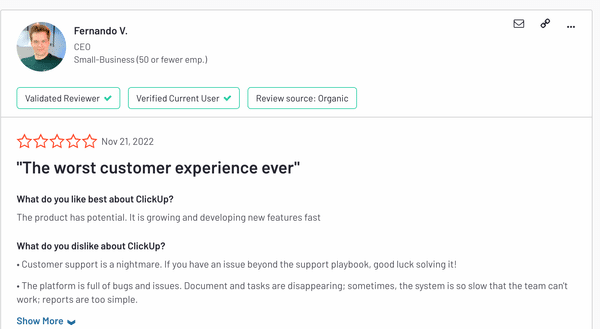
Dive into customer reviews on third-party platforms to gain unfiltered insights into product strengths, weaknesses, and areas of improvement.
👉Reviews provide direct feedback from users, highlighting what they love and what they believe needs improvement.
➕Positive reviews can be leveraged in marketing materials, testimonials, and case studies to build trust with potential customers. ➖Negative reviews offer a roadmap for product development, pinpointing areas that require attention.
Analyzing competitor reviews can reveal gaps in their offerings, providing opportunities to differentiate and position your product more favorably. Platforms to consider include Trustpilot, G2 Crowd, Capterra, and industry-specific review sites.
→ What are customers complaining of?
→ What features do consumers love the most?
→ What objections can you address via your content?
#33 Sell Benefits, Not Just Features
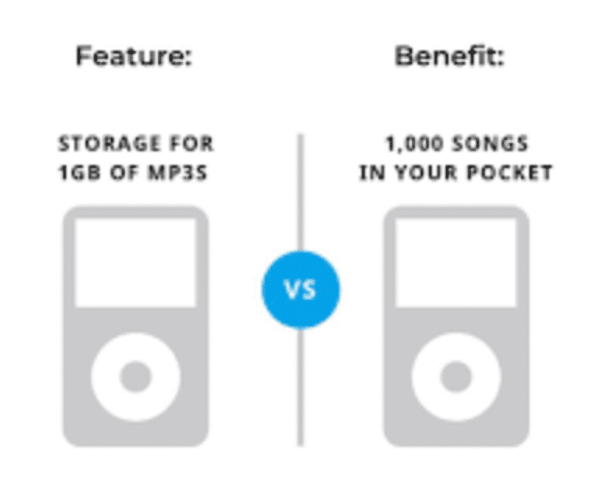
• Focus on What Matters to Users: Understand that users are more driven by the benefits they receive rather than the features you offer.
• Define Clear Value: Benefits provide a more tangible value. For instance, instead of saying “Advanced Encryption”, say “Secure and Worry-Free Data Protection”.
• Address Core Desires: Emphasize benefits that align with desires like more Love, Money, Acceptance, and Free Time, and reduce Stress, Conflict, Hassle, and Uncertainty.
• Tie Features to Benefits: While features can still be highlighted, always connect them back to the benefits they provide to ensure the user understands the value.
#34 Send loom videos for cold outreach
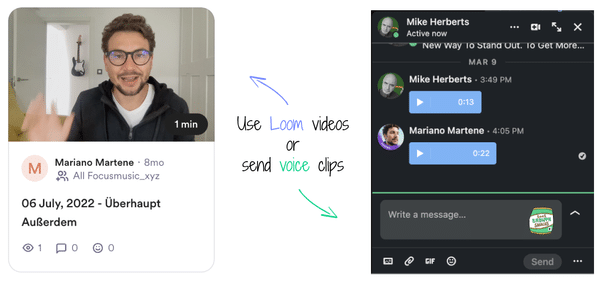
Create a video recorded specially for this person. Human interactions have another level, and just the idea that someone recorded a video for you provoques curiosity. On the videos mention: – who you’re, – what you want, – and what is in it for this person. Keep it short, less than a minute.
PS: Experiment sharing though loom interface for extra Open Rate!
#35 Set a North Star Metric
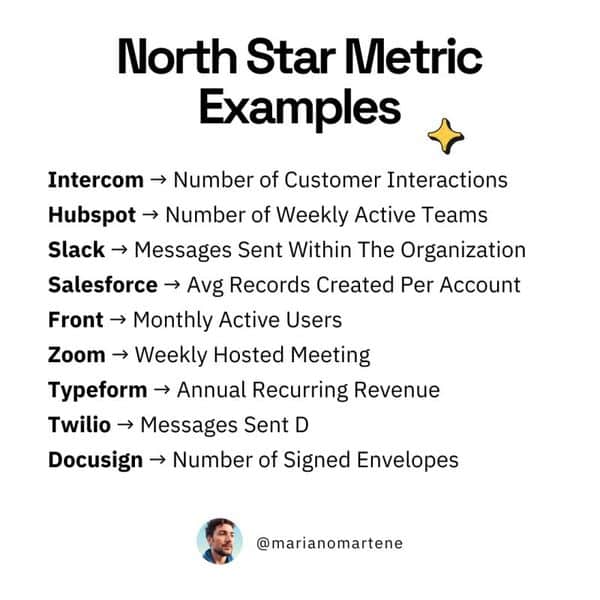
Try to focus on what really matters. A great tool is to make use of a North star metric and to set goals (e.g. with the OKR framework).
👉 Check Alex’s examples of north star metrics.
👉 Check Mariano’s examples of north star metrics.
#36 Showcase Testimonials for each Persona
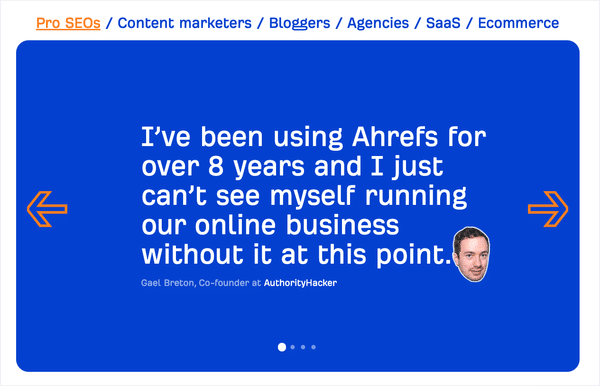
Ahrefs uses a widget that displays testimonials based on personas. Each testimonial feature a Person on the Specifc role, for example for SaaS: Head of Marketer, Team Lead, etc. Try if you can do the same!
1. Identify Key Personas: Start by identifying the primary personas or categories of your user base.
2. Collect Testimonials: Gather testimonials from users in each persona category. Ensure that these testimonials highlight the unique benefits and features relevant to that specific group.
3. Implement: Develop a widget or feature on your website that can detect or ask the user’s persona. Based on this information, display the relevant testimonials.
#37 Social proof/testimonials – Pricing Page
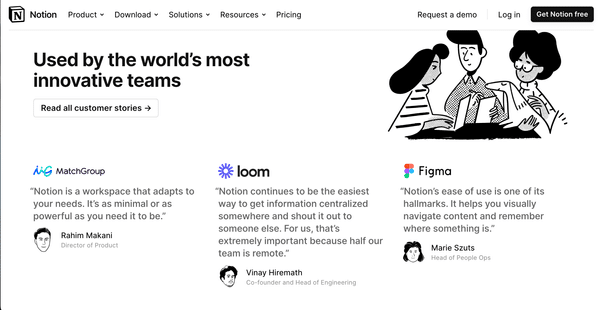
Add social proof also on your pricing page.
👉 See Notion or Canva pricing page.
#38 Social proof/testimonials – Signup/ account page
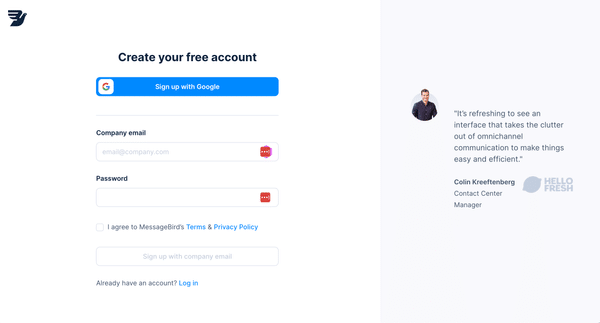
Add social proof also on your signup/create account page.
#39 Social proof/testimonials – Welcome email sequence
Add social proof also in your welcome email sequence.
As long as signups haven’t converted to paying customers you still need to ‘sell’ – so the social proof is key. This could be sharing a case study or product reviews.
#40 Specify your audience
• Clearly define who your product is for. By doing so, you create a sense of exclusivity and make those within the target group feel more valued.
• Balancing Act: While narrowing down your audience might seem limiting, it can lead to a stronger bond with a specific segment. It’s about weighing the potential broader appeal against a deeper connection with a niche.
• Build Trust: Transparency about your target audience can foster trust. Customers value clarity and knowing if a product aligns with their needs from the outset.
👉 Create landing pages for your top 3 main personas. Make explicit your addressing to them on your copy.
#41 Survey customers
Frequently surveying your customers is key. You will always learn more.
🔗 Use this survey template from PMF Survey to get started.
Here are some possible questions (depending on what you’re trying to learn about your customers).
• How did you discover [X product/company]?
• How would you feel if you could no longer use X?
• What would you use as an alternative if X weren’t available?
• What’s the primary benefit you’ve experienced from X?
• Have you recommended X to anyone? • What type of person do you think would benefit from X?
• How could we improve X to better meet customer needs?
Important customer Segments to get better insights:
– Most active
– loyal users
– Infrequent
– high NPS score
– high/low MRR
– inactive users (signed up but never used it)
– new customers
– churned customers
#42 Survey non-converting leads
An (early-stage) SaaS startup should ask every signup who is not converting to paying for feedback.
Here is how you can do it:
- Trigger an email sequence (e.g. founder is reaching out to learn what’s missing for them to convert)
- Create a super simple survey form (collect feedback in your CRM)
- Outreach via phone (if you are sales-led)
- Based on the reason you can proactively offer a solution for that, e.g.:
- Product was too complex —> offer a free training session
- Too expensive —> restate your value proposition and offer a discount
- Trial was too short —> Extend the free trial for 14 days
You will collect lots of valuable feedback that lets you optimize your product, your messaging, your pricing, etc.
P.S. Of course you should do the same for churns. Have a churn customer email automation (asking for churn reason) + reach out to them via phone.
#43 Take conscious decisions on Top-Down vs. Bottom-up Sales motion
Do you target the company/decision makers or users/employees directly? Especially in the early stage you should focus on one clear sales motion and don’t try both in parallel. 10 key differences between a Top Down (ABM) vs. Bottom Up Sales Motion 1. Target decision maker vs. Target users 2. Larger deal size vs. Smaller contract size with upselling over time 3. Faster and more structured (top-down) roll-out vs. (Bottom-Up) opportunistic expansion 4. Few(er) leads top of funnel vs. Wide(r) funnel with lots of leads 5. Sales-led growth (Sales demos) vs. self-service product-led growth (Free trials) 6. Show value (in sales meetings) vs. experience value (aha moment of your product) 7. Most sales touchpoints before using the product vs. most sales touchpoints after product sign-up (focus on activation, expansion & retention) 8. Multiple stakeholders vs. one buyer persona/user 9. Longer sales cycle vs. fast(er) sales cycle 10. Lower churn vs. higher churn
#44 Try ’Benefit Buttons’
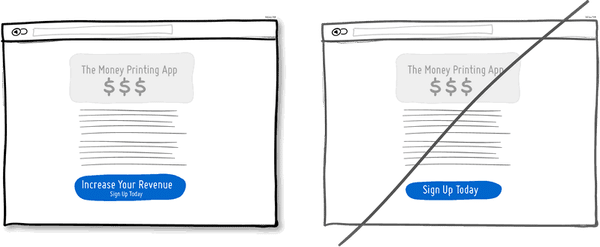
Instead of generic buttons like “Sign Up”, use “Save Money Now” to highlight the immediate value.
Pair Action with Benefit: Position the benefit close to the action button, reinforcing the reason for the action.
Use Task-Based Buttons Sparingly: For familiar actions in the interface, such as “Edit” or “Delete”, task-based labels are appropriate.
#45 Use template libraries to unlock growth
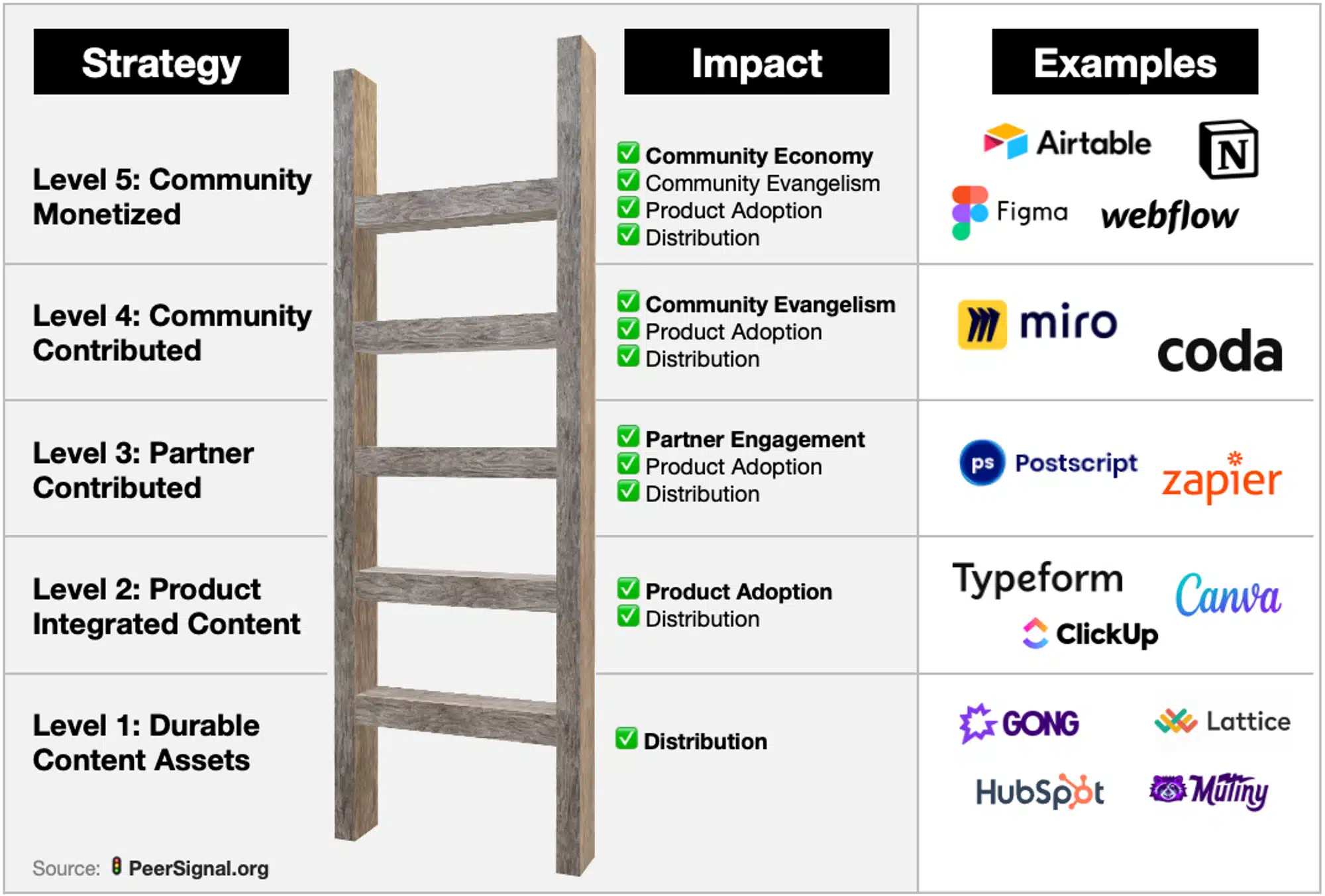
Template libraries have become a pivotal growth strategy for many B2B SaaS companies, especially those following a product-led growth (PLG) model.
Level 5: Community Monetized
— In Figma’s template library, you see the pinnacle. — The template library does it all – distribution leverage, product adoption, partner engagement, community engagement, and community monetization.
— Notion, Airtable, and Webflow are also shining examples.
Level 4: Community Contributed
— Before building a creator economy around SaaS templates, many companies will open the doors to community contribution. Examples: Miro, Coda.
— When executed well, it gives the community more depth and massively broadens the distribution and product adoption benefits. 🪜🪜
Level 3: Partner Contributed
— Companies with strong partner programs can tap their ecosystem to contribute templates.
— This approach supports partner distribution, vendor distribution, and product adoption. — Postscript and Zapier are good examples here.
Level 2: Product Integrated
— This strategy helps horizontal platforms position for specific problems and personas.
— Is it content or is it a product feature? Both!
— Many PLG companies build/generate the content and then let users access, load, or integrate them into the product experience.
— Examples: ClickUp, Typeform, Canva, Dooly
Level 1: Durable Content Assets
— In some contexts, product and/or community integration doesn’t make sense. But template libraries might still be the ultimate “lead magnet” with built-in distribution. — Gong, Mutiny, and Lattice are other great modern examples.
— HubSpot has run this playbook at high volume for years. Credits: Adam Schoendfeld and Camille Trent from PeerSignal.org Full analysis and Examples with Summary deck 👉 https://lnkd.in/dSh3WSiA
#46 Use ‘Message Match’ on your campaigns
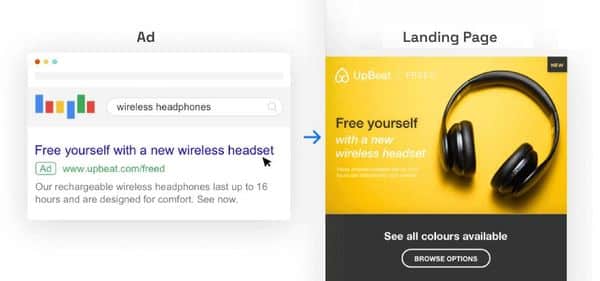
Boost conversion rates by ensuring the messaging/creative of your landing page matches that of your ads.
- Avoid sending traffic to your homepage; it’s often filled with distractions and may not align with your ad’s messaging.
- Direct traffic to a specific landing page tailored to match the ad’s messaging/creative.
- Matching the ad’s messaging/creative with the landing page increases the ad’s relevancy and quality score.
- A higher quality score can lead to a higher conversion rate (CR) and a lower cost per click (CPC).
- This tactic is a win-win: it can improve the user experience and potentially reduce advertising costs.
Conclusion
Finally, we have exhausted an enriching journey through 19 acquisition tactics for your SaaS based on the Pirate Framework.
Remember, cultivating a significant user base, activating them, and implementing effective strategies to ensure their retention can pave the way to substantial revenue. Happy customers are likely to bring even more customers.
So what’s stopping you from applying these tactics and witnessing a remarkable upswing in your SaaS growth dynamics?
To fuel your quest for growth, we’re excited to share this exclusive resource: “30 Days of Growth“. Take full advantage of this bundle for an unbounded growth journey!🎯
